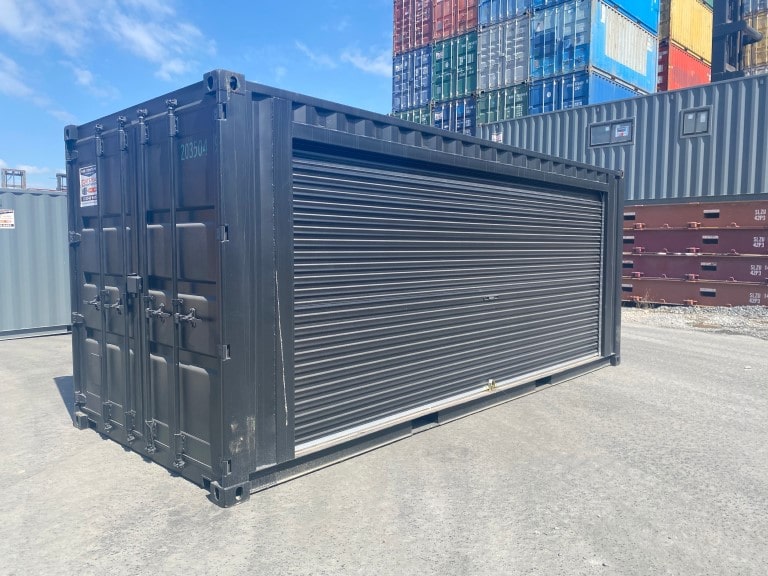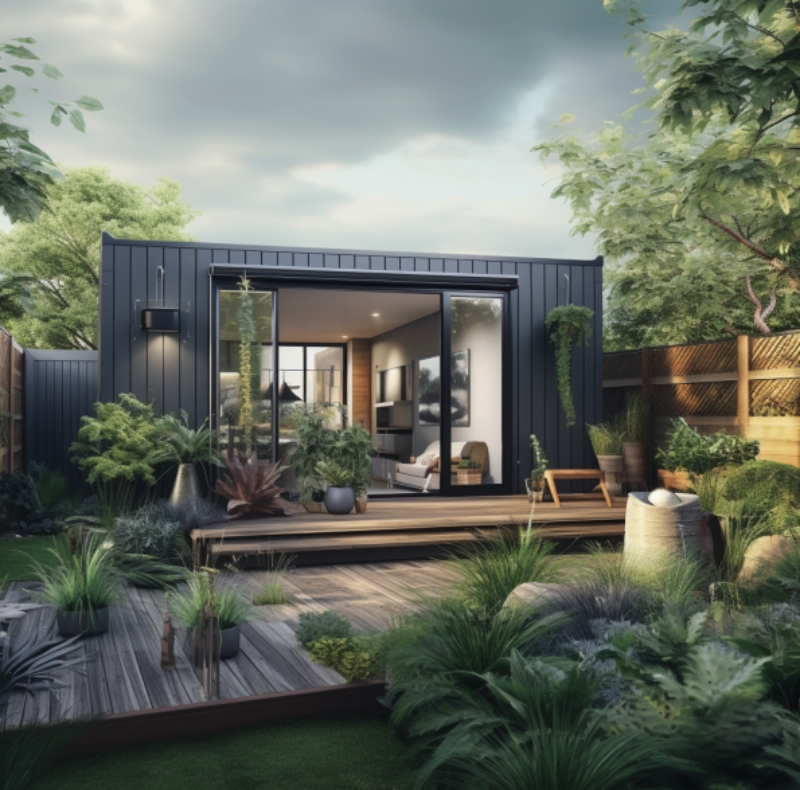There is no doubt that there are many advantages in incorporating a shipping container into the shell of a new home, office, shed, outhouse or extension to your home. Converted shipping containers are:
- Cheaper than a home built from the ground up
- Environmentally friendly
- Quicker to construct
- Often require less in the way of foundations than a brick built home
That said, you need to put a lot of thought into designing and building a converted shipping container building, and understand the imperfections so you can plan around them. In this article we will discuss five broad areas:
- Getting around local authority planning constraints
- Understanding that used containers aren’t perfect
- Considering whether to buy new or used
- Engineering the container to ensure it retains its structural integrity
- And finally, bringing an architect aboard
With these broad headings in mind you should be in a better place to come to us at Gateway Containers to discuss your needs. Let’s get into the detail shall we?
1. Getting around local authority planning constraints

By this we don’t mean paying off a dodgy planning inspector – we do mean you need to follow the rules.
Firstly you need to consider what exactly the building will be for, as its purpose will feed into planning. Local authorities generally treat a converted container building as they would any other building material. Its permanence is the biggest issue.
A temporary building will often be allowed in place with no bureaucracy. The problem is that many people have taken the idea of ‘temporary’ and gone too far, to the point that certain councils have more tightly defined the timeframe. According to a 2018 ABC News article, “Queensland’s Sunshine Coast Council just reinforced its own rules around containers, meaning no approval is needed for 30 days’ use in an urban area and up to 90 days in more rural areas. An exception is made for construction workers using a container as storage, but once construction is completed the container has to go.”
Here at Gateway Containers we can build an office for temporary installation on-site that you can move from location to location like this one we did recently. Fully fitted it is then up to you to take it wherever you want.
Where it comes to a permanent construction it is worth your while to research local planning regulations as these do differ in subtle ways.
You need to file all the usual paperwork required to the council for planning, including engineering plans that show it has the structural integrity even after you have removed walls / doors / added windows and so on. As we will discuss in the next sections, be ready for questions as to the containers’ structural integrity that could impact their soundness as structures.
2. Not all used containers are perfect

There are economic advantages in buying used containers for your extension, granny flat or new-build home. Though recently there has been a spike in container prices due to the pandemic, generally you can buy a good quality, used shipping container for $2,800, as compared to more than three times that price for a new one.
There is generally no way of telling what has happened to the shipping container in its globetrotting career before it ended up in the yard for sale.
Good ones may have been carrying electronics and consumer goods and have been treated well. You may not be able to tell these apart from ones that have been carrying things like fertiliser and other noxious chemicals that may smell clean but still retain residues of those chemicals in the floors and internal paint coating (it’s cheap enough to strip both out but still an added expense).
Other containers have been dropped in accidents and you may not know what has happened to weaken the structural integrity. Still others may not be perfect in shape, thanks to the strains of loading and transporting them. That will mean that they can’t be stacked or laid side by side with the certainty of Lego bricks!
If you are going for a new-build and still want to buy used shipping containers for conversion, then it may help for you to look at a recent article we published in the Gateway Gazette looking at the gradings we give them prior to sale.
3. Buy new or used?
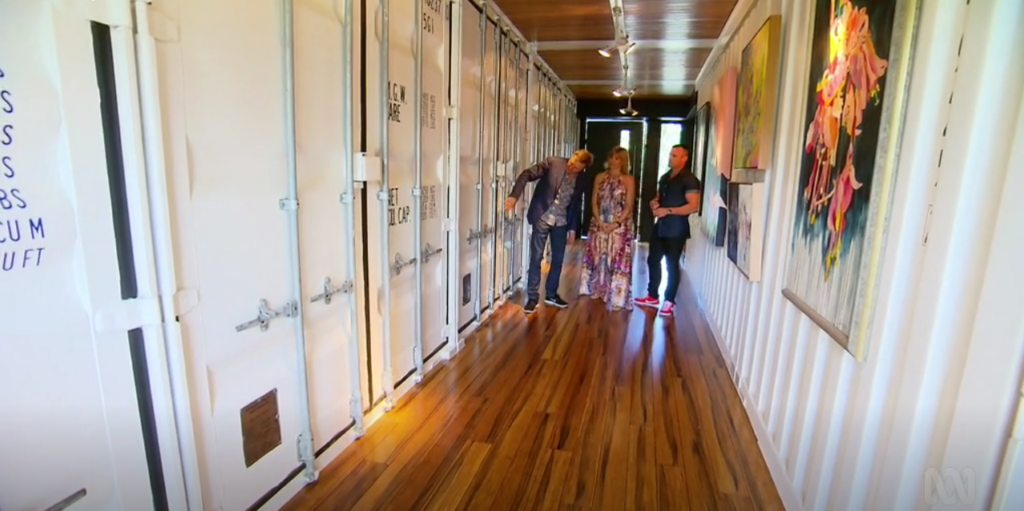
Buying new or used isn’t a foregone conclusion either.
In 2019 Grand Designs Australia featured a home built here in Brisbane using shipping containers that were supplied by us. In this case, the house builder specified that the shipping containers had to be new.
The reason that the clients wanted the new shipping containers (costing $5,000 and up each), instead of saving money by buying used, was that they could be sure that the container building blocks were within a small tolerance of exactly the right size and shape to fit together for the final result.
As we discussed above, even containers that have been loaded correctly and not been dropped or abused may be a little out of shape. Steel is flexible and will bend, and with the movements and stresses that it will face on ships, trucks and trains, you may find that they are not perfectly shaped. This could be 5cm out of true shape (not much) but could mean that the containers don’t sit perfectly atop or side by side one another.
Not everyone converting shipping containers for an architectural purpose wants complete perfection. Even large hotel complexes have been built from used shipping containers, with huge economies in terms of cost. Typically a good quality, used container will cost as little as $2,800 depending on the size. There will be added expenses in cutting, reinforcing and so on, but these modifications are still required for the new, $5,000 container. You will still make savings on a used container that would far outweigh the minor inconveniences of them being slightly out of shape.
Another thing to remember is that there are annual and global market variations to used shipping container prices that could mean the container costs more to buy at different times. Currently there are issues with global trade and supply of containers due to the pandemic so we’re in an unusual spike in prices at the moment (though the market will level out). Ahead of the Christmas shopping season there is greater demand for containers but in November to March the demand isn’t so strong and the price dips.
4. Reinforcing and modifications
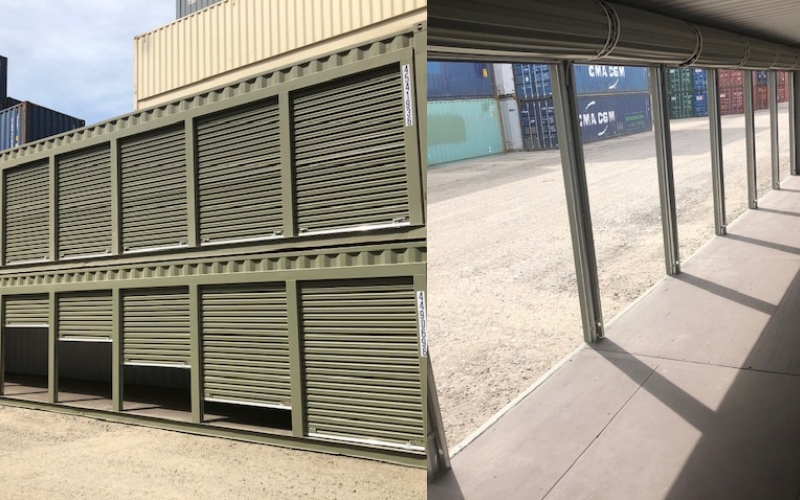
Here at Gateway Containers we have been modifying shipping containers for many years. We know that when you cut a hole for a window or door, or more extreme things like removing a wall or the roof, you need to reinforce the hole you cut.
Thanks to our expertise in this, we are confident that we don’t over-engineer the thing either, so you will get just the right girders and bars to maintain an equivalent strength when holes are cut in to make your conversion possible.
That’s why you should go to an expert to get the conversion done. This will also feed back into the planning issues we discussed above, so you will be able to present the plans showing that the container block will meet the tolerances required and reassure the planners the building won’t fall down!
In coming to us, you will find that we can contribute to the overall cost savings thanks to our experience in fitting things like ventilation, doors and windows, electrics and even plumbing. You will be able to bring in a convoy of trucks to the site and drop much of the building into place very quickly, saving on the bottom line cost of the building.
5. Get an architect!
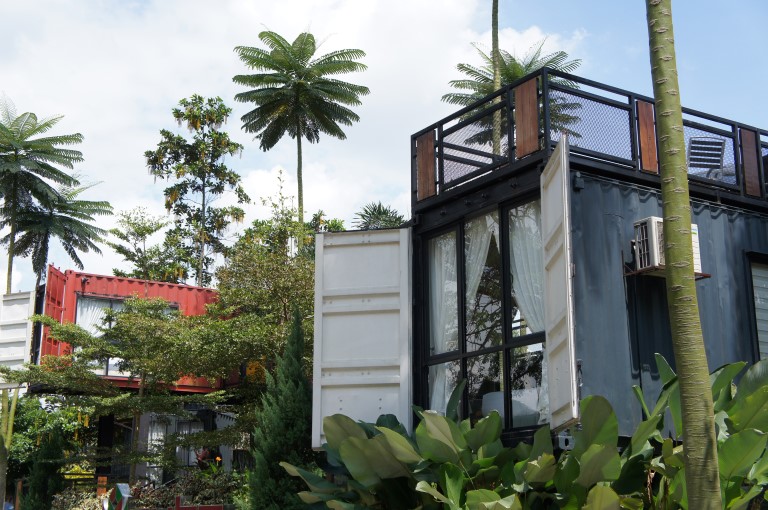
The final point to remember is you should bring in a structural engineer or architect for any addition to your existing home or a new-build. They will take your ideas and turn it into the plans required for planning consent, as well as making the building aesthetically pleasing and habitable.
This is not to say it has to be a boring box. As you can see in the image above, you can be bold and daring in your final design (as long as the planners like it)! You can clad it, add a pitched roof and hide the fact that the building or home has been built with shipping containers, or you can have it naked and obvious as to its construction. Just have an expert to design it to make your ideas a reality.
With all these things in mind, contact Gateway Containers

Having looked at all the factors involved in putting a shipping container conversion together, get in contact with our sales team to discuss your final plans. We can help you with the selection, sale and modification of your container if you’re looking for a on-site office or home work space, or put you in touch with the right people for the housing project you have in mind.
